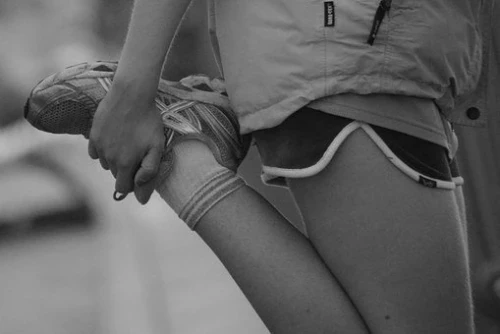Shin Splints…the bane of many sports persons lives.
What?
Shin Splints can refer to lower leg pain that occurs below the knee either on the front outside part of the leg (anterior Shin Splints) or the inside of the leg (medial Shin Splints).
Pain is usually felt soon after starting exercise and can gradually improve when resting. Although the pain can sometimes fade while exercising, it can eventually become constant even when resting.
Pain may be achy and dull to start with but then become sharp which will cause you to stop exercising.
Why?
In most cases Shin Splints will occur when you do “Too much. Too soon”. They often plague novice runners who do not build up their mileage gradually enough. It can also affect seasoned runners who abruptly change their workout regime, suddenly adding too much mileage, for example, or switching from running on flat surfaces to hills.
Others causes can be:
- having tight Calf muscles, weak ankles, or tight Achilles tendon
- inadequate stretching
- wearing poorly fitting or worn-out trainers that do not cushion and support your feet properly
- excessive stress placed on one leg or one hip from running on uneven surfaces or always running in the same direction
- having flat feet or feet that over-pronate
Do I need to worry about Shin Splints?
Shin Splints are not usually serious, but the pain can stop you from exercising. If you ignore them and continue to run through them, the pain may get worse and will no doubt impact on your recovery time and your performance. They can usually be treated at home and should start to get better within a few weeks.
How to prevent?
- Increase or change your training gradually – this includes mileage, speed and hill training. Try and ensure you get a balance of high intensity training sessions with low impact exercises.
- Incorporate exercises that work on your overall strength and flexibility such as Pilates / strength training.
- Train on even or flat surfaces as much as you can.
- If you are flat footed, speak to a Podiatrist who may be able to recommend orthotics to help reduce pressure on your shins.
- Warm up before and stretch after training sessions and play particular attention to your Calves and Achilles.
- Ensure your footwear is supportive and provides the right level of cushioning. Use specific sports shops that offer trainer fitting services.
- In some cases Shin Splints can be caused if you are overweight…so this may be something you want to think about.
Treatment
- STOP: doing the activity that caused your Shin Splints and rest for a few weeks. This does not mean stop everything, but just focus on other activities that do not put strain on your legs such as cross training (swimming or spinning).
- Ice the area, but be sure to wrap the ice in a towel before applying to the surface. Keep the ice there for 10 - 15 minutes and repeat several times a day.
- Speak to an Osteopath to see if there are other causes of your Shin Splints such as tight Calves, Achilles or even spinal alignment. They may suggest changing your running style to help reduce pressure.
- Speak to a Podiatrist about your trainers or sports shoes to ensure they are giving your feet enough support and cushioning.
- If you have medial Shin Splints, gently stretch your Achilles and if you have anterior shin splint stretch your Calves.
- Stretch your shins by drawing the alphabet on the floor with your toes from a seated position on both legs. Repeat this three times a day.
- Try to stretch your shins by kneeling on a soft floor, legs and feet together and toes pointed directly back. Slowly sit back onto your calves and heels, pushing your ankles into the floor until you feel tension in the muscles of your shin. Hold for 10 to 12 seconds, relax and repeat.
If symptoms persist once you have tried all of these options then seek professional advice from an Osteopath or GP.
Post treatment
Once the pain has gone COMPLETELY…ease yourself back into your sport and increase mileage and intensity slowly. Avoid hills for the first few weeks and again incorporate these in slowly.
Continue with the Calf and Achilles stretches.
Continue to ensure you are wearing the right sports shoes and replace them as soon as they start to wear.

